OPEN SPCE EXAMS
169OPEN SPCE EXAMS
Vernissage: Wed., March 12, 2025, 7 p.m.
Opening hours: Thu. - Fri., 3 - 7 p.m., Sat. - Sun., 11 a.m. - 7 p.m.
with: Saskia Falke, Laura Stange, Safeya Fawzy, Christin Grossmann, Rieke Brandt, Lisa Karnauke, Nawon Song
In mid-March, Master's graduates in Fine Arts and Communication Design will present their final projects as part of openspceopenspceopenspce... – An apprenticeship in the system at spce | Muthesius. Some of the examinations will be open to the public.
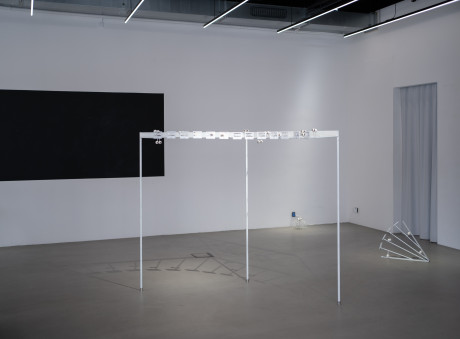
Nawon Song – Können Sie alles richtig sehen?
© spce | Muthesius und Künstler*innen, Foto: Hannes Schlötelburg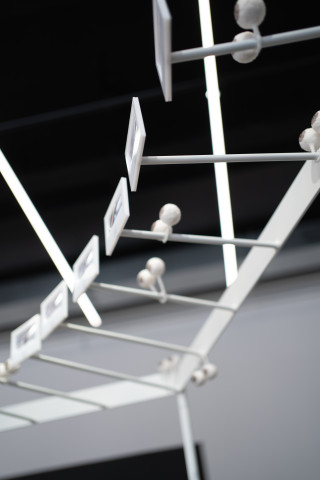
Nawon Song – Können Sie alles richtig sehen?
© spce | Muthesius und Künstler*innen, Foto: Hannes Schlötelburg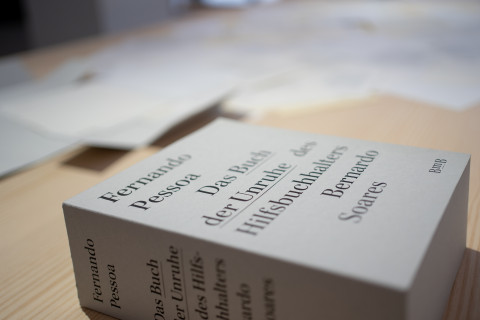
Laura Stange – Das Buch der Unruhe des Hilfsbuchhalters Bernardo Soares
© spce | Muthesius und Künstler*innen, Foto: Hannes Schlötelburg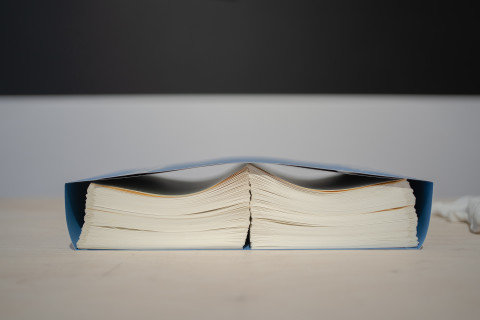
Christin Grossmann – Zwischen Nähe und Distanz – Buchgestaltung und szenische Lesung von A. R. Gurneys Zweipersonenstück Love Letters
© spce | Muthesius und Künstler*innen, Foto: Hannes Schlötelburg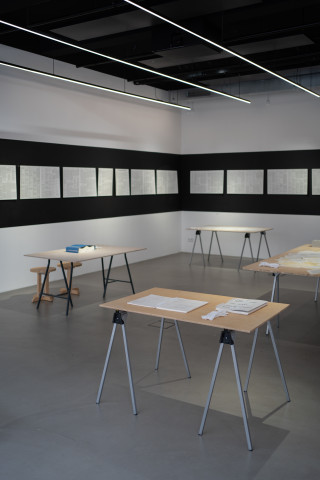
OPEN SPCE EXAM
© spce | Muthesius und Künstler*innen, Foto: Hannes Schlötelburg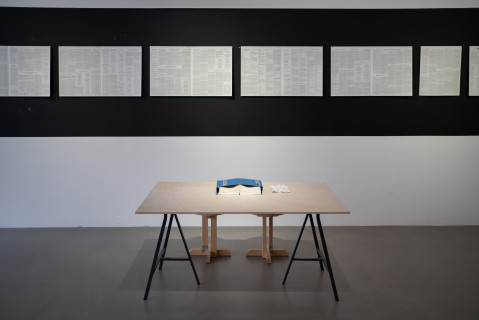
OPEN SPCE EXAM
© spce | Muthesius und Künstler*innen, Foto: Hannes Schlötelburg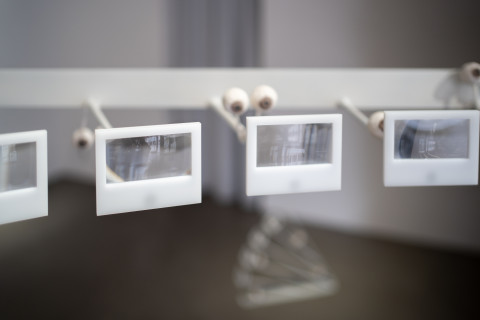
Nawon Song – Können Sie alles richtig sehen?
© spce | Muthesius und Künstler*innen, Foto: Hannes Schlötelburg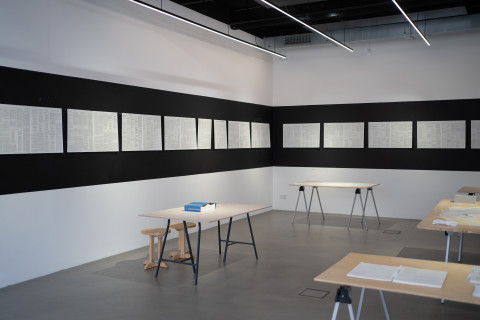
OPEN SPCE EXAM
© spce | Muthesius und Künstler*innen, Foto: Hannes Schlötelburg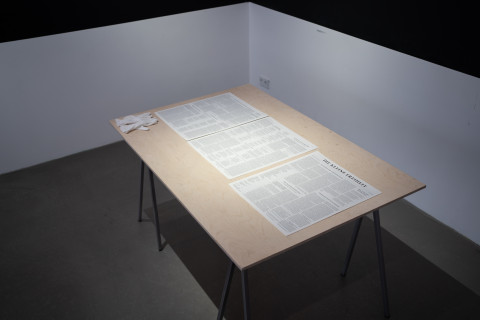
Saskia Falke – Erich Kästner „Der tägliche Kram“ – Eine Zeitung
© spce | Muthesius und Künstler*innen, Foto: Hannes Schlötelburg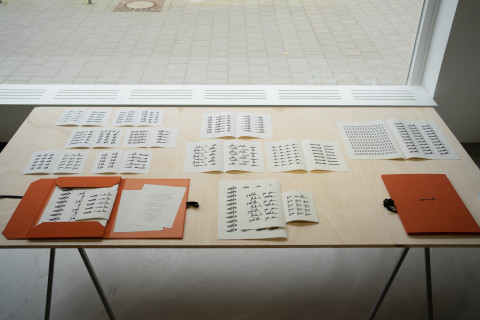
Safeya Fawzy – Die Ankunft
© spce | Muthesius und Künstler*innen, Foto: Hannes Schlötelburg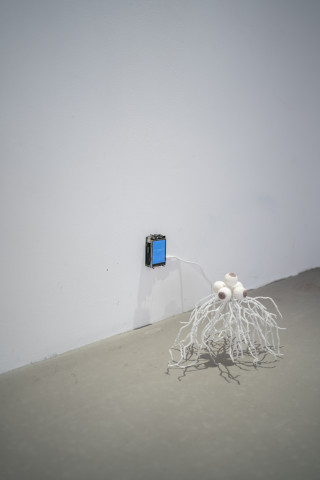
Nawon Song – Können Sie alles richtig sehen?
© spce | Muthesius und Künstler*innen, Foto: Hannes Schlötelburg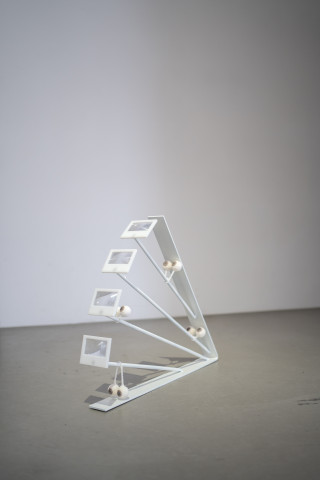
Nawon Song – Können Sie alles richtig sehen?
© spce | Muthesius und Künstler*innen, Foto: Hannes Schlötelburg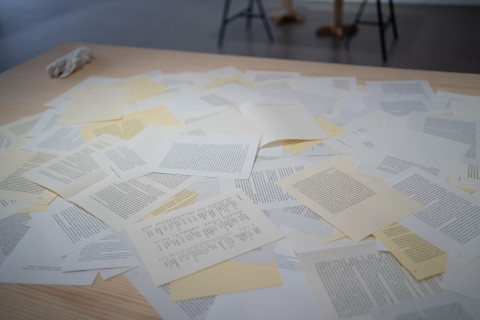
Laura Stange – Das Buch der Unruhe des Hilfsbuchhalters Bernardo Soares
© spce | Muthesius und Künstler*innen, Foto: Hannes Schlötelburg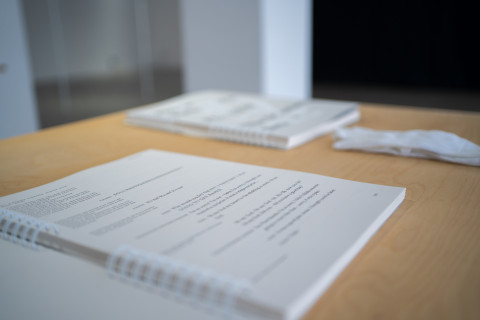
Rieke Brandt – FLEABAG
© spce | Muthesius und Künstler*innen, Foto: Hannes Schlötelburg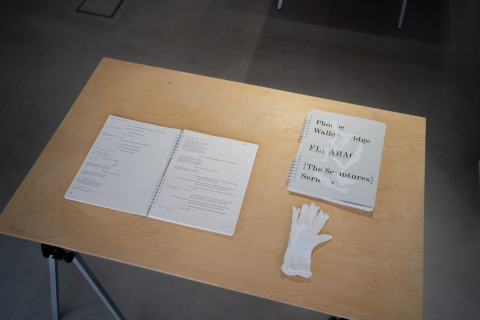
Rieke Brandt – FLEABAG
© spce | Muthesius und Künstler*innen, Foto: Hannes Schlötelburg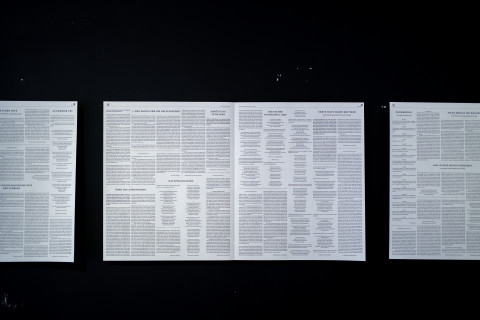
Saskia Falke – Erich Kästner „Der tägliche Kram“ – Eine Zeitung
© spce | Muthesius und Künstler*innen, Foto: Hannes Schlötelburg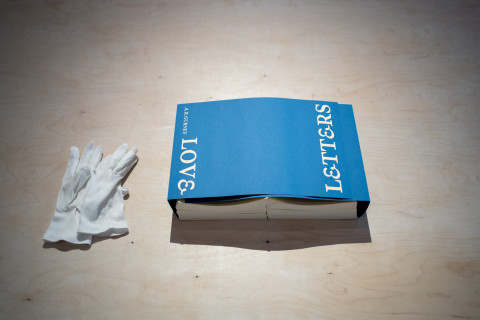
Christin Grossmann – Zwischen Nähe und Distanz – Buchgestaltung und szenische Lesung von A. R. Gurneys Zweipersonenstück Love Letters
© spce | Muthesius und Künstler*innen, Foto: Hannes Schlötelburg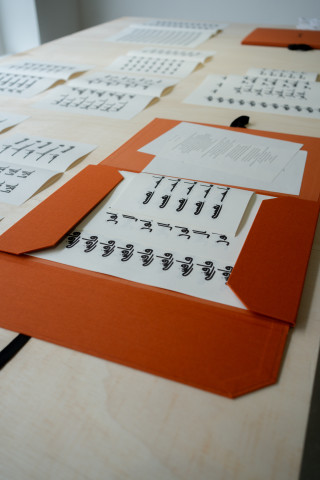
Safeya Fawzy – Die Ankunft
© spce | Muthesius und Künstler*innen, Foto: Hannes Schlötelburg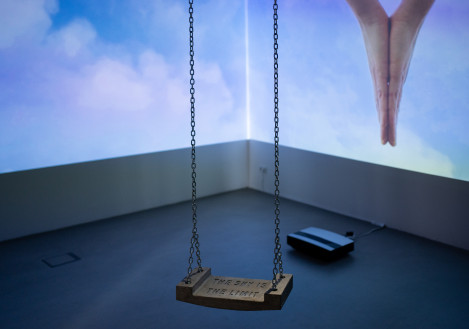
Lisa Karnauke – The sky is the limit
© spce | Muthesius und Künstler*innen, Foto: Hannes Schlötelburg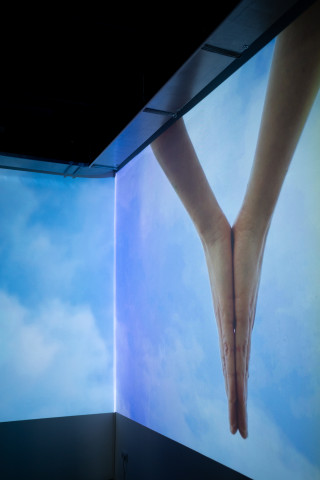
Lisa Karnauke – The sky is the limit
© spce | Muthesius und Künstler*innen, Foto: Hannes Schlötelburg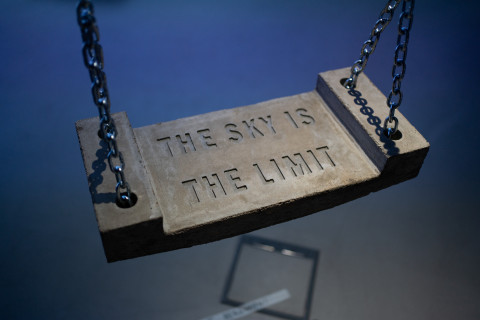
Lisa Karnauke – The sky is the limit
© spce | Muthesius und Künstler*innen, Foto: Hannes SchlötelburgTuesday, March 11, 2025
5 p.m.: Rieke Brandt – FLEABAG, typography and book design
6 p.m.: Saskia Falke - Erich Kästner “Der tägliche Kram” – A newspaper, typography and book design
7 p.m.: Christin Grossmann – Between closeness and distance – book design and staged reading of A. R. Gurney's two-person play Love Letters, typography and book design
Wednesday, March 12, 2025
5 p.m.: Safeya Fawzy – The Arrival, typography and book design
Mareike Egge – Poetry Lost? – Paradise Lost and three translations
Communication Design | Typography and Book Design
“Paradise Lost”, John Milton's epic poem in twelve books, tells the story of Adam and Eve's fall from paradise. Three translations of the work are designed as loose stacks of sheets of paper and weighted down with a stone. Their fragility and indeterminacy contrast with the solid, bound volume of the original. The book series is inspired by the questions: What is the relationship between the original and the translation? Is it still the same work, a new one or a fragment? Which elements are lost, and is the translation of poetry ultimately impossible? The external form of the translations makes the “transfer” – to a new place, to a different form – visible. The arrangement of the verses of the four works in individual formations embodies the inseparable connection between content and language in the poem by making it visually clear that each translation transfers the poem into a different form.
Saskia Falke - Erich Kästner “Der tägliche Kram” (“The daily stuff”) – A newspaper
Communication Design | Typography and Book Design
After the Second World War, Erich Kästner wrote for Die Neue Zeitung, the youth magazine Pinguin and the cabaret Die Schaubude. He later published a selection of these texts in the collection Der tägliche Kram. Chansons und Prosa 1945–1948. In poems, songs, plays, essays and glosses, Kästner describes life in the years after the war, characterized by new beginnings, reflection and the attempt to come to terms with what he had experienced. A central motif is his appeal to young people and society as a whole to play an active part in democracy so as not to repeat the mistakes of the past.
In order to place these texts in a contemporary context, particularly with regard to the shift to the right in our society, they were transferred to the medium of a newspaper. While a book can be perceived as a self-contained work, the newspaper lends its content greater immediacy. The open layout also allows the various texts to be presented side by side and makes the moods of the post-war years more tangible. The collection is supplemented by excerpts from Kästner's diary Notabene 45. The second part, Die kleine Freiheit. Chansons und Prosa 1949-1952, has also been redesigned in newspaper form.
Laura Stange – The book of restlessness of the assistant accountant Bernardo Soares
Communication Design | Typography and Book Design
Fernando Pessoa collected the fragments of his work, The Book of Disquiet of the Assistant Accountant Bernardo Soares, in a pile. His sketched book comprised random page formats, papers and different lengths of text on which he wrote down Soares' thoughts. The loose form of the realization makes the work tangible. The suggested order can be broken up and the viewer can immerse themselves completely in Soares' stream of thought. A part of Pessoa's paper jumble is preserved in the various papers.
The work consists of a title page, 481 loose pages and a bound section with 88 pages. Format of the volume: 180 × 245 × 85 mm
Nawon Song – Can you see everything properly?
Fine Arts | Ceramics Class
Nawon Song's works visualize the transformed and distorted reality of information and images in digital technology through installations and sculptures. Metal frames in horizontal and vertical structure, which reflect the human point of view, are arranged with lenses made of Fresnel material. Viewed through these lenses, eyeballs made of salt appear not in their original form, but in different distorted variations. This illustrates how we are increasingly losing reality in the digital environment and are constantly being exploited as a resource in a world of blurred and unclear information. In a modern society where technology, humans and the commodification of data are intertwined, it focuses on the disappearing reality and distorted perception of our world.
Lisa Karnauke – The sky is the limit
Fine Arts | Media Class
In the expansive video installation “The sky is the limit”, a child's game becomes the starting point for repetitive toiling and persistence. Anything is possible, but at the same time, due to these very possibilities, an inertia sets in from which it is impossible to escape in a purely repetitive mode.
A swing made of cast concrete hangs from the ceiling on round steel chains, bearing the imprint “THE SKY IS THE LIMIT”.
The installation paradoxically breaks with the expectations of the traces in the room: the swing's sweeping lightness and light-heartedness is broken by the concrete material and its solitary placement in the room. The carefree nature of the clapping game against a kitschy, cloudy sky is contrasted by the one-sidedness of the game, the loneliness of the singing of a fading voice and the content of the sung text.
Safeya Fawzy – The Arrival
Communication Design | Typography and Book Design
“I will love my soul, in the trembling of its shadows live centuries, filled with the colors of imagination.”
These words begin the poem The Arrival by the Iraqi poet Nazik Al-Malaika. The artistic work is an approximation of the poem and moves between poetry, writing and self-love. In this experimental exploration, individual words unfold through calligraphic exercises – a meditative process of writing, repetition and internalization.
Christin Grossmann – Between closeness and distance – book design and staged reading of A. R. Gurney's two-person play Love Letters
Communication Design | Typography and Book Design
In the two-person play Love Letters by A. R. Gurney, decades of correspondence characterize the communication between two characters who try to build a close emotional bond despite being physically separated. The book plays with the boundaries between oral and written communication and embodies the tension between closeness and distance – both in the drama and in the production. Everyone is very welcome to attend the staged reading at 7 p.m. at spce.
Rieke Brandt – FLEABAG
Communication Design | Typography and Book Design
In recent years, television series have not only pushed the boundaries of the medium in terms of content, drastic and socially critical themes, anti-heroes, etc., but also in terms of form.
The series “Fleabag” (2016) by Phoebe Waller-Bridge is based on the play of the same name, a one-woman show that Waller-Bridge first performed at the Edinburgh Fringe Festival in 2013 and subsequently showed at the Soho Theater in London.
The author provokes and confuses the audience with her protagonist and plays with the rules of a classic series format, allowing her anti-heroine “Fleabag” to break the fourth wall. Fleabag either speaks and looks directly into the camera or addresses her imaginary viewers in a kind of soliloquy.
The script for the series served as the basis for my book project, two volumes (Series 1 and Series 2) with ring stitching. I deal with “Fleabag's” speeches to the camera and how the fourth-wall breaks can be translated typographically.
| Further events within open spce open spce open spce...: | ||
|---|---|---|
| hyper\\cube- interdisziplinäre interaktive 4D-Klang-Installation | 23/03 — 30/03/25 | 166 |
